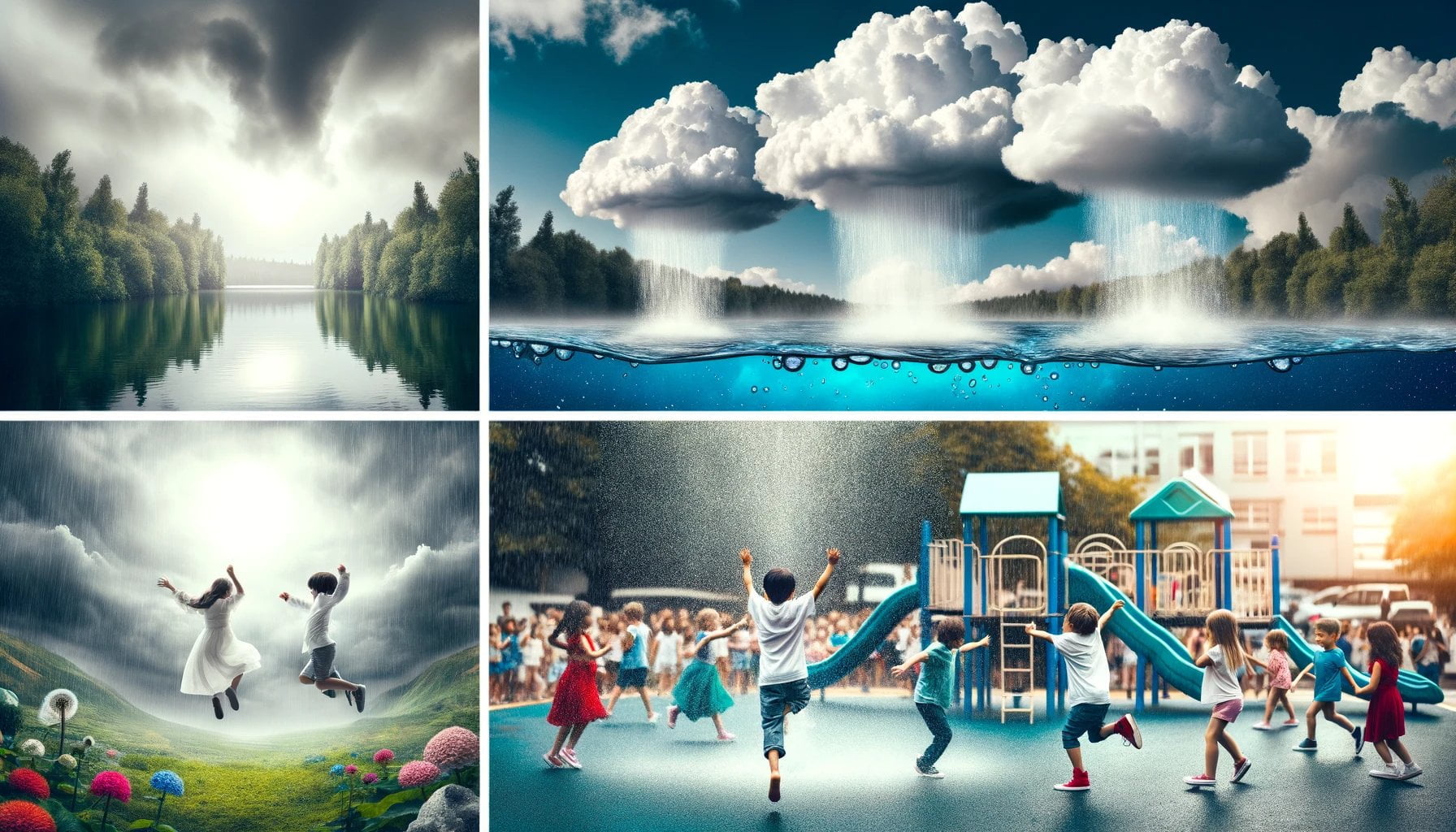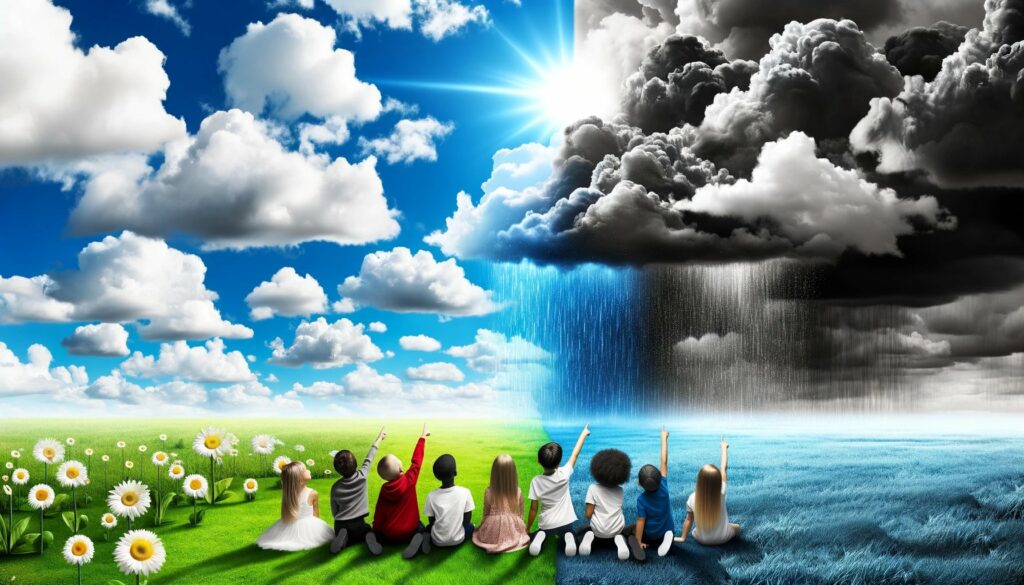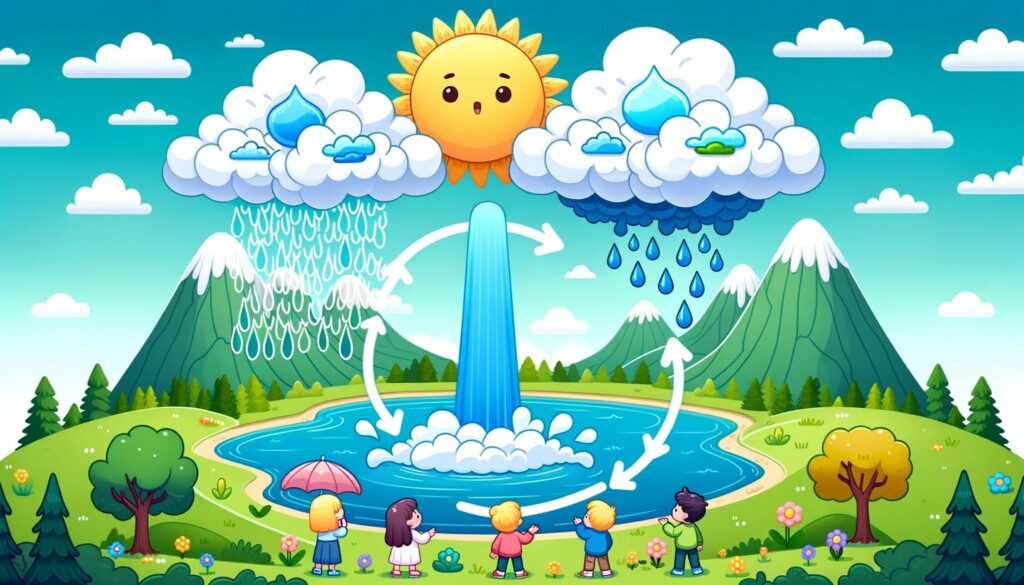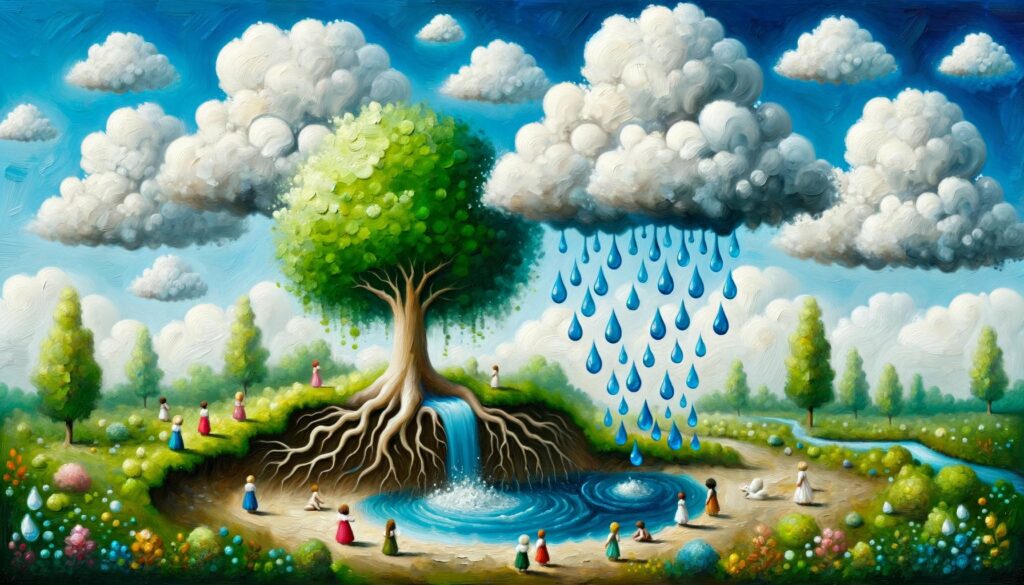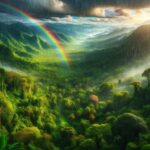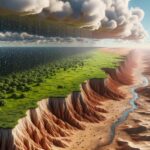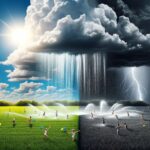Discover the fascinating world of precipitation in the water cycle for kids. Have you ever wondered how rain, snow, and other forms of precipitation come to be? Well, in this article, we will explore the enchanting process of precipitation and its role in the water cycle. Delve into the mysteries of the atmosphere, as we uncover the magic behind how water transforms from vapor to liquid and falls from the sky, quenching the earth’s thirst. So, fasten your seatbelts and get ready for an awe-inspiring journey into the captivating realm of precipitation!
What is Precipitation in the Water Cycle for Kids?
In the world of science, there’s a fascinating process called the water cycle. Have you ever wondered how water moves around the Earth? Well, one important part of this cycle is precipitation. But what exactly is precipitation? Let’s dive in and explore this exciting topic!
Understanding Precipitation
Precipitation is a big word, but it simply means any form of liquid or frozen water that falls from the sky. You might have heard of rain, right? Well, rain is just one type of precipitation, but there are others too, like snow, sleet, and hail. Imagine the different shapes and sizes water can take when it falls down from the clouds!
How Does Precipitation Happen?
Now, let’s talk about how precipitation actually happens. It all starts with something called water vapor. Water vapor is the gas form of water that you can’t see—like invisible steam. When the air gets cold, this water vapor turns back into liquid water or even solid ice. It’s like magic happening up there in the clouds!
When enough of these tiny water droplets or ice crystals come together, they form clouds. And when the clouds get heavy with water, precipitation occurs. The water droplets or ice crystals fall back down to the ground, bringing us the wonderful gift of rain, snowflakes, or other types of precipitation.
The Journey of Precipitation
Once precipitation falls from the sky, it goes on an exciting journey. It can flow into rivers, streams, lakes, or oceans, ending up in large bodies of water. You might have seen rivers and lakes around your area—those are the destinations for some of the precipitation!
But precipitation doesn’t just stop there. It can also be absorbed by the ground, making its way into the soil. We call this groundwater. It’s like the secret underground storage of water, waiting to be used by plants and animals. So, even if you can’t see it, there’s water hiding beneath your feet!
Sometimes, precipitation can also accumulate in really cold places like ice caps and glaciers. These frozen masses store water for long periods of time, like giant icy warehouses. They slowly release the water when it gets warmer, contributing to the water cycle.
Completing the Water Cycle
So what happens after precipitation reaches the ground or accumulates in icy places? Well, it doesn’t stop there, my curious friend. The water in rivers, lakes, and the soil has a secret power—it can evaporate. Evaporate means it turns into water vapor again and rises up into the air.
This rising water vapor completes the water cycle. It joins the invisible water vapor in the air, creating clouds once more. And the whole process repeats itself again and again—precipitation falling, flowing, evaporating, and rising. It’s like a never-ending dance between the Earth and the sky, keeping our planet hydrated.
Precipitation in a Nutshell
Let’s quickly recap what we’ve learned about precipitation in the water cycle:
- Precipitation includes rain, snow, sleet, and hail.
- It forms when water vapor condenses to create clouds.
- Precipitation flows into bodies of water or is absorbed into the ground as groundwater.
- It can also accumulate in ice caps and glaciers.
- Precipitation evaporates and rises back into the atmosphere, completing the water cycle.
Isn’t it incredible how something as simple as rain can play such a significant role in our planet’s water cycle? Now you know what precipitation is all about and how it fits into the bigger picture. So, the next time you see raindrops or snowflakes falling from the sky, you’ll have a deeper understanding of the wonderful world of precipitation!
To truly understand the mysteries of the water cycle, one must explore the mesmerizing realm of precipitation. Picture a lush rainforest, where drops of water gracefully dance from the heavens, nourishing the earth below. These delicate droplets are a crucial part of the never-ending cycle that sustains life as we know it. If you’re curious to learn more about the enchanting process of precipitation and how it fits into the grand scheme of the water cycle, dive into the captivating world of precipitation water cycle. Let your curiosity be your guide as you uncover the wonders hidden within this magical link.
Process of Precipitation
What is precipitation? How does it happen? Do you ever wonder where rain, snow, or hail comes from? Well, get ready to explore the fascinating world of precipitation in the water cycle!
Precipitation is a crucial part of the water cycle that involves the formation of rain, snow, sleet, or hail. It occurs when water droplets in the clouds become too heavy to stay suspended and fall to the Earth’s surface. But how does this process exactly work?
How Does Precipitation Form?
Picture this: you’re outside on a warm day, and suddenly, you see dark clouds appearing in the sky. Have you ever wondered what’s happening up there? Well, let’s find out!
- Evaporation: The water cycle starts with evaporation – the process when water heats up and turns into water vapor. It rises into the atmosphere—just like steam from a boiling pot of water. It can even come from lakes, rivers, and oceans!
- Condensation: Now, here’s where it gets interesting. As the water vapor moves higher in the sky, it cools down and turns back into tiny water droplets. You know what they say: hot air rises, and cold air falls. Those tiny water droplets form clouds through a process called condensation. It’s like when your breath turns into fog on a cold day!
- Precipitation: Eventually, these tiny water droplets start sticking together, getting bigger and heavier. This is where precipitation happens! When those droplets become too heavy to stay up in the clouds, they fall to the ground, bringing rain, snow, sleet, or even hail along with them. It’s like water falling from the sky!
Types of Precipitation
Now, let’s take a closer look at the different types of precipitation that can occur. After all, rain, snow, sleet, and hail are not all the same!
- Rain: Most of the time, precipitation falls as rain. It’s those lovely water droplets falling from the sky and cheering up our plants and gardens!
- Snow: When the temperature drops below freezing, those water droplets freeze into tiny ice crystals, and voilà! Snowflakes are born. They come together to form piles of soft, fluffy snow that blanketed landscapes during winter.
- Sleet: Sometimes, when it’s extra chilly, raindrops can freeze into tiny ice pellets before they reach the ground. This fascinating phenomenon is called sleet. It’s like tiny ice balls falling from the sky!
- Hail: Lastly, we have hail. During powerful thunderstorms, strong winds carry raindrops up into the clouds. There, they freeze and become solid ice balls. As these ice balls get caught in the wind, additional layers of ice build up, making them larger and larger. When they become too heavy, they fall to the ground as hailstones. It’s like icy marbles raining from above!
Why is Precipitation Important?
Precipitation plays a vital role in our environment and helps our plants, animals, and even us thrive! Let’s explore why it’s so essential:
- Water for Life: Precipitation provides the water that plants need to grow and nourish themselves. It’s like their drink of water!
- Ecosystem Support: Precipitation also fuels entire ecosystems by filling up rivers, lakes, and oceans with fresh water. This water is home to countless species of fish, plants, and other organisms!
- Balancing Earth’s Water: The water cycle wouldn’t be complete without precipitation. It helps maintain a balance in the Earth’s water, ensuring that it is constantly recycled and redistributed.
Measuring Precipitation
Scientists measure precipitation using various methods to keep track of how much water is falling from the sky. Let’s take a look at a few methods they use:
- Rain Gauges: These are special containers designed to catch rainwater. Scientists can then measure the amount of water collected to determine the rainfall.
- Weather Radar: Meteorologists use weather radar to track precipitation from a distance. It allows them to estimate the amount and intensity of rain, as well as track severe weather events like storms.
Conclusion
Now you know all about the process of precipitation and how it brings rain, snow, sleet, and hail into our lives! Remember, it all starts with evaporation, followed by condensation forming clouds, and then the water droplets becoming too heavy and falling to the ground. Precipitation replenishes our water supply, nourishes plants, and supports ecosystems, making it an essential part of the water cycle. So, the next time you see raindrops falling from the sky, you’ll understand just how truly amazing and fascinating precipitation can be!
Importance of Precipitation in the Water Cycle
Precipitation is an essential part of the water cycle that connects various components of Earth’s ecosystem. It plays a crucial role in maintaining weather patterns and ensuring the distribution of water resources globally. But why is precipitation so important? Let’s delve into the fascinating world of precipitation in the water cycle and discover its significance in a simplified manner that kids can easily understand.
The Water Cycle and the Role of Precipitation
The water cycle is a continuous process that involves the movement of water on Earth. It consists of various stages, including evaporation, condensation, precipitation, and collection. Today, we will focus on the role of precipitation.
What is precipitation?
Precipitation is any form of liquid or frozen water that falls from the sky. It includes rain, snow, sleet, and hail. When water vapor in the atmosphere cools down and condenses into tiny water droplets, clouds are formed. These droplets stick together and become heavier, eventually falling back to the ground as precipitation.
Why is precipitation important?
1. Returning Water to Earth: Precipitation is the main way water is returned to the surface of the Earth. When it rains or snows, the water replenishes our lakes, rivers, and oceans. Without precipitation, these waterways would quickly dry out, leaving our planet devoid of water.
- Regulating Weather Patterns: Precipitation plays a vital role in regulating weather patterns. Rainfall and snowfall are essential for maintaining the delicate balance of ecosystems. They provide moisture for plants to grow, support agricultural activities, and create habitats for various animal species.
- Water for Drinking and Agriculture: Precipitation is a primary source of freshwater, which is crucial for our survival. Clean water is essential for drinking, irrigation in agriculture, and meeting the needs of everyone in our communities. Without precipitation, our water supplies would dwindle, leading to severe shortages.
- Ecosystem Support: Precipitation sustains ecosystems by providing water for plants, animals, and microorganisms. It helps maintain the delicate balance of life on Earth. Plants need water to grow, and animals depend on plants for food and shelter. Precipitation ensures that these essential resources are available to support diverse ecosystems.
- Balancing the Water Cycle: Precipitation completes the water cycle. Through evaporation, water heats up and turns into water vapor, rising into the atmosphere. As it cools and condenses, clouds form, and precipitation occurs. This cycle continuously repeats, ensuring that water is recycled and available for all living beings.
In summary, precipitation is a vital component of the water cycle that connects the ocean, land, and atmosphere. It regulates weather patterns, provides freshwater for drinking and agriculture, supports ecosystems, and balances the Earth’s water cycle. Without precipitation, our planet would be drastically different, with dry landscapes and a scarcity of water resources.
So next time you see raindrops falling from the sky or witness snow covering the ground, remember the importance of precipitation in sustaining life on Earth. It’s a fascinating process that keeps our planet vibrant and flourishing. Stay curious, young scientists, and continue to explore the wonders of our incredible world!
Reference Table
Here’s a reference table summarizing the importance of precipitation in the water cycle:
| Importance of Precipitation |
|---|
| Returns water to the Earth’s surface |
| Regulates weather patterns |
| Provides freshwater for drinking and agriculture |
| Supports ecosystems |
| Balances the water cycle |
FAQ
What is precipitation?
Precipitation refers to any form of liquid or frozen water that falls from the sky, such as rain, snow, sleet, or hail. It occurs when water vapor in the atmosphere condenses into liquid or solid water, forming clouds.
How does precipitation form?
Precipitation forms when water vapor cools down and turns back into water droplets, which then condense and combine to form clouds. As these water droplets in the clouds grow larger and heavier, they eventually fall to the Earth’s surface as rain, snow, sleet, or hail.
What are the different types of precipitation?
The different types of precipitation include rain, freezing rain, sleet, snow, and hail. The type of precipitation that falls depends on the temperature and atmospheric conditions.
Why is precipitation important?
Precipitation is an essential part of the water cycle as it is how atmospheric water returns to the surface of the Earth. It plays a vital role in regulating weather patterns and the distribution of water resources globally. Precipitation is also crucial for providing freshwater for drinking, agriculture, and ecosystems.
How is precipitation measured?
Precipitation can be measured using various techniques, such as rain gauges or weather radar. These tools help scientists and meteorologists collect data on the amount and intensity of precipitation in a given area.
